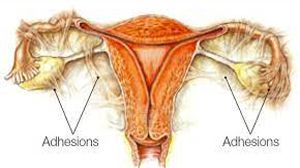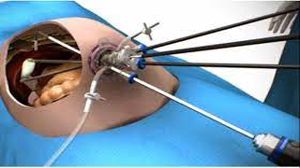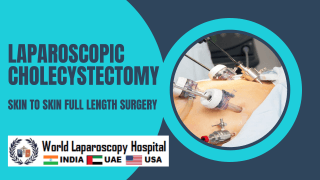Advanced Laparoscopic Approach for Acute Appendicitis with Lateral Adhesion
Add to
Share
1,650 views
Report
2 years ago
Description
Introduction: Acute appendicitis is a common surgical emergency that often requires prompt intervention to prevent complications such as perforation. Traditionally, the standard treatment for acute appendicitis involved an open appendectomy, which required a larger incision and longer recovery times. However, advancements in surgical techniques have led to the development of laparoscopic appendectomy, a minimally invasive approach that has gained popularity in recent years. This article explores the advanced laparoscopic approach for acute appendicitis, particularly when lateral adhesions are present. Laparoscopic Appendectomy: Laparoscopic appendectomy is a surgical technique that involves making several small incisions in the abdomen to insert a camera and specialized instruments. This approach offers numerous advantages over open surgery, including reduced postoperative pain, shorter hospital stays, and quicker return to normal activities. Challenges with Lateral Adhesion: In some cases of acute appendicitis, the appendix becomes adhered to adjacent structures in the abdomen, particularly the cecum or colon. Lateral adhesions can complicate the surgical procedure, as they require careful dissection to safely remove the inflamed appendix without causing injury to nearby organs. Contemporary Minimally Invasive Techniques: Advanced laparoscopic techniques have been developed to address the challenges posed by lateral adhesions in acute appendicitis cases: Preoperative Imaging: Before surgery, imaging studies such as CT scans can help identify the presence and extent of lateral adhesions, allowing the surgical team to plan accordingly. Adhesion Dissection: During the laparoscopic procedure, the surgeon carefully dissects the adhesions using specialized instruments. This step requires precision and expertise to avoid inadvertent injuries. Ligation and Resection: After safely separating the appendix from the adhered structures, the surgeon ligates the base of the appendix and removes it. In some cases, a stapling device may be used for this purpose. Hemostasis and Closure: Ensuring that there is no bleeding from the surgical site is crucial. The surgeon will also close any small incisions with sutures or staples. Benefits of the Advanced Laparoscopic Approach: Minimal Scarring: The small incisions result in minimal scarring, which is cosmetically favorable. Quicker Recovery: Patients often experience less postoperative pain and a shorter hospital stay, leading to a faster return to normal activities. Reduced Infection Risk: Smaller incisions reduce the risk of surgical site infections. Precise Diagnosis: Laparoscopic cameras provide a clearer view of the abdominal cavity, enabling accurate diagnosis and treatment. Laparoscopic Appendectomy: Laparoscopic appendectomy involves making small incisions in the abdominal wall through which a camera and specialized instruments are inserted. This approach has gained popularity due to its reduced postoperative pain, shorter hospital stays, and faster return to normal activities. Challenges Posed by Lateral Adhesion: In certain cases of acute appendicitis, the inflamed appendix adheres to adjacent structures, such as the cecum or colon. These lateral adhesions can complicate the appendectomy procedure, as they demand meticulous dissection to safely separate the appendix from neighboring organs. Contemporary Minimally Invasive Techniques: To address the complexities introduced by lateral adhesions in acute appendicitis, advanced laparoscopic techniques have been developed: Preoperative Evaluation: Preoperative imaging, including CT scans, is essential to identify the presence and extent of lateral adhesions, allowing the surgical team to plan the procedure accordingly. Adhesion Management: During surgery, the surgeon carefully dissects and manages the lateral adhesions using specialized instruments. This step necessitates precision and experience to avoid unintended injuries. Appendix Removal: After successfully separating the appendix from the adhered structures, the surgeon ligates the base of the appendix and removes it. In some instances, a stapling device may be employed for this purpose. Hemostasis and Closure: Ensuring there is no bleeding from the surgical site is paramount. The small incisions are closed using sutures or staples. Benefits of the Advanced Laparoscopic Approach: Minimal Scarring: Smaller incisions result in minimal scarring, which is aesthetically preferable for patients. Swift Recovery: Patients typically experience less postoperative pain and shorter hospitalization, facilitating a quicker return to their daily routines. Lower Infection Risk: Smaller incisions reduce the likelihood of surgical site infections. Enhanced Visualization: Laparoscopic cameras offer a clearer view of the abdominal cavity, enabling precise diagnosis and treatment. Conclusion: The advanced laparoscopic approach for acute appendicitis with lateral adhesion represents a contemporary and highly effective minimally invasive surgical method. With careful preoperative assessment, meticulous surgical techniques, and expert management of lateral adhesions, even complex cases can be successfully managed. This approach not only promotes quicker recovery but also ensures improved overall outcomes for patients with acute appendicitis. Healthcare providers must stay updated on these advanced techniques to provide optimal care to their patients. Conclusion: The advanced laparoscopic approach for acute appendicitis with lateral adhesion represents a contemporary and effective minimally invasive surgical method. With careful preoperative planning and expert surgical techniques, even complex cases can be managed successfully, offering patients a quicker recovery and improved overall outcomes. It is essential for healthcare providers to stay updated on these advanced techniques to provide the best care for patients with acute appendicitis.
Similar Videos






